October 17, 1903 — Ever since the day when man was first able to fulfill his dream to fly in the sky (Credits to Wright brothers who finally took a successful flight of their biplane), there has been an urge among people to how to design better planes, micro-aerial planes, huge UAVs, supersonic planes, rotor planes etc. these are countless and will never end until-and-unless the people do not stop innovating new concept planes — and yes, still the dream is same, to fly in the sky but in a modern way, more fashionable way and more efficient way.
Aeromodelling Club, IIT Kanpur has been innovating new concept planes since 2006 and ever since then there was no turning back, with time the projects have improved, new conceptual airplanes have been made here and it has set its own benchmark at the world level (especially after winning in Aero-TechFest at USA). Summer project provides the first step to students to convert their innovations, their new ideas and their imaginations into reality, a working model. Similar work has been done this year, many new planes have been made and tested effectively.
Let’s have a look at the projects made by students under the aeromodelling club this year (2013)
Delta Biplane — as the name suggests it’s simply a biplane with two fixed delta (Δ) wings. This biplane has few unique features : one is, it has a height adjustable and varying gradient mechanism; another is, being a delta plane it does not has a tail instead there are winglets to prevent vortex generation. This plane is going to be the passenger plane in future because we need more speed, reach anywhere in least time and it’s delta shape will help reach super-sonic speed and biplane(2-wings) will provide more pay-load capacity.

Fan Wing — One of the most interesting research work going on around the world, new concept of STOL aircraft. It is the first horizontal-rotored integral lift and propulsion wing in history to sustain flight. Some obvious applications will be in unmanned surveillance, Ultralight aircraft for sport flying, short-haul freight, fire-fighting, crop-dusting, rescue operations, and city taxi/tourist/police flights. Its potential low sound signature, lightness of construction, slowness and short take-off capability give it potential in both rural and urban applications and its stability give it wide potential uses both in civilian and military context.
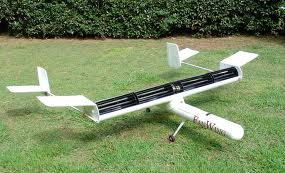
Flying Wing — as the name suggests it’s simply a wing that could fly no fuselage and no tail, with most of the crew, payload and equipment being housed inside the main wing structure. This plane made in the club uses an EDF (Electric Ducted Fan) as a thrust source. It could be used as a tactical airlifter design, it potentially has a low radar reflection cross-section so could be used for spying and long range bombers.

Hoverboard — Hovering means levitation that is an object is suspended by a physical force against gravity, in case of hoverboard it is a film of air that provides the required force against gravity. A strong blower is used to push the air through holes made in a thick plastic sheet (skirt), this creates an air cushion and reduces friction. Now forward thrust and direction could be given using another motor. It is majorly used for personal transportation and fun.
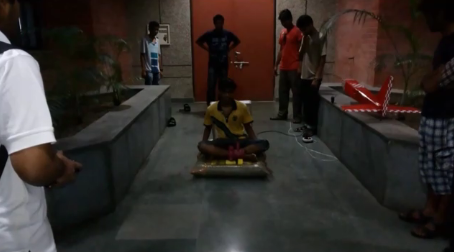
Ornithopter — This one is unique on its own. It works similar to how birds fly and hence the name ‘Ornithopter’. A particular gear box is used for this, where it is used to control the direction of wings and tail. It is a beautiful and wonderful project, and really amazes anyone seeing it fly. Because ornithopters can be made to resemble birds or insects, they could be used for military applications, such as aerial reconnaissance without alerting the enemies that they are under surveillance. Hobbyists can build and fly their own ornithopters. These range from light-weight models powered by rubber band, to larger models with radio control.
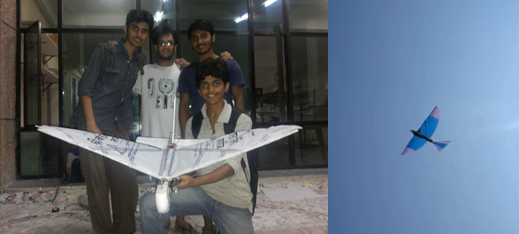
Para Glider — Para-Gliding is a recreational and competitive adventurous sport of flying paragliders. The pilot sits in a harness suspended below a hollow fabric wing whose shape is formed by its suspension lines, the pressure of air entering vents in the front of the wing and the aerodynamic forces of the air flowing over the outside. A smaller model of the paraglider was made in the club, with a small 3-wheel harness, thrust was provided by a motor pushing air backward and a turn able nose wheel to control direction.
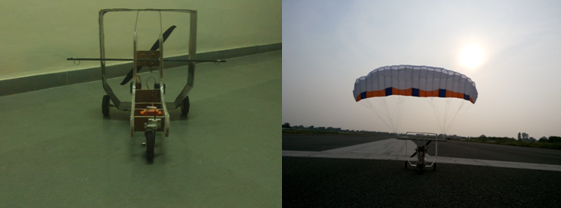
Penguin UAV (Unmanned Aerial Vehicle) — is one of the largest planes built in club ever with a wing span of nearly 3 meters and net weight of 3kgs., it’s unique design and a different tail portion (inclined to each other) makes it highly stable, designed as a high performance unmanned airframe, Penguin UAV is one of the most capable airframes available today.

Power Glider — is a high aspect ratio powered glider. As soon as the word ‘glider’ strikes our mind the first thing comes to us is gliding and an aircraft basically used for travelling long distances, but this is little bit different from others. Its key features are: light weight (4kgs.), tapered wing and boom model fuselage (to reduce drag), high aspect ratio (to maximize lift to drag ratio, a characteristic property of glider). The future utility and idea that we have in mind is to install solar panels on the 4m long wing which would make it a completely solar powered UAV and would be an environmental friendly and a fuel efficient model and thus the future of aviation for travelling long distances.
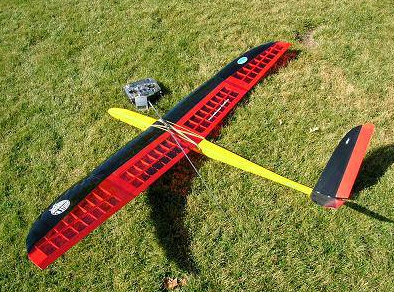
Quadrotor — is a multicopter that is lifted and propelled by four rotors. This project is a joint venture of Aeromodelling club and Electronics Club.Unlike most helicopters, quadrotors generally use symmetrical blades; these can be adjusted as a group, a property known as ‘collective’, but not individually based upon the blade’s position in the rotor disc, which is called ‘cyclic’. Control of vehicle motion is achieved by rotation rate of one or more rotor discs, thereby changing its torque load and thrust/lift characteristics. Quadrotor unmanned aerial vehicles are used for surveillance and reconnaissance by military and law enforcement agencies, as well as search and rescue missions in urban environments.

RC(Radio Control) Trike — is a type of powered hang glider using a high performance Rogallo wing coupled to a propeller. The term “trike” refers specifically to the form of this aircraft. In particular, trikes have been used to fly across oceans, frozen tundra, barrendeserts, and even into backyard landing strips.
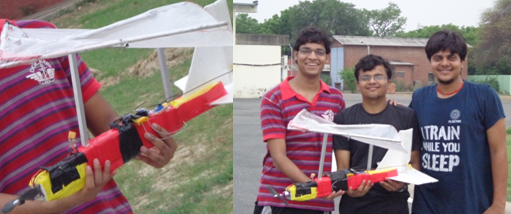
SAE(Society of Automotive Engineers) Plane — This plane was basically designed to take part in an international aeromodelling-technical event conducted by SAE. This is an IC (Internal Combustion) plane which uses methanol as fuel. Attached with 3-wheels to work as tri-cycle tail-wheel landing gear with the direction of tail-wheel controlled by the rudder motion. The competition has certain task events, and the purpose of this plane was to carry a certain maximum payload in the competition.
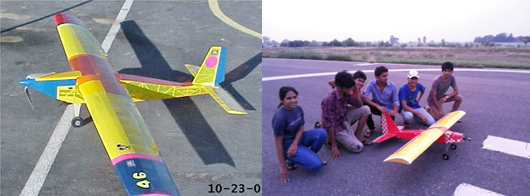
Tilt Rotor — generates lift and propulsion by way of one or more powered rotors (sometimes called proprotors) mounted on rotating engine pods or nacelles usually at the ends of a fixed wing. It combines the vertical lift capability of a helicopter with the speed and range of a conventional fixed-wing aircraft. Two rotor aircraft were built to prove the tiltrotor design and explore the operational flight envelope for military and civil applications.

All these projects clearly shows the vast/multi dimensional thinking of students, their creativity and application of thoughts, this is just a beginning there is lot more to explore and definitely aeromodelling club would be there to help.




